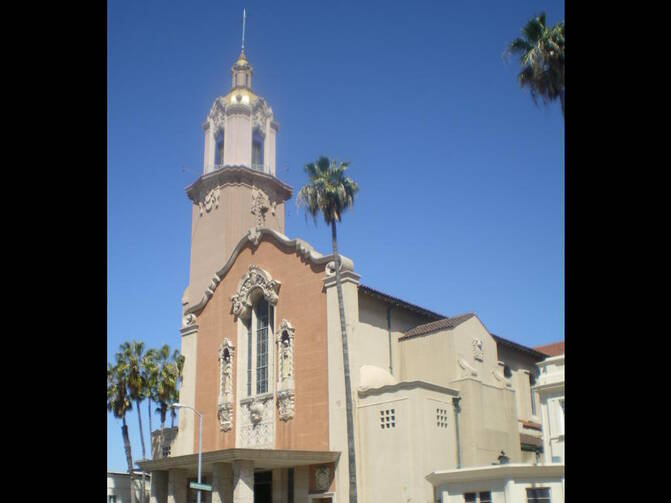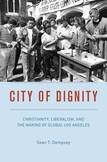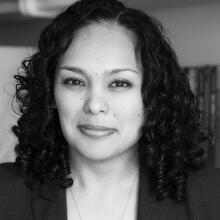Review: Faith and activism in the City of Angels
After the Los Angeles riots in 1992 that followed the acquittal of four officers of the Los Angeles Police Department in the brutal 1991 beating of Rodney King, Bob Fambrini, S.J., asserted the centrality of dignity in bringing about peace and justice in Los Angeles in a homily: “Our journey toward rebuilding a new city,” he said, requires an approach to community “that respects the rights and dignity of all its people.”
City of Dignity, by Sean T. Dempsey, S.J., tells a story of how progressive religious leaders, organizations and institutions worked to shape Los Angeles into a city where dignity flourished through their grassroots organizing and activism in the decades after World War II until the mid-1990s. Dempsey emphasizes the Second Vatican Council’s central role in shaping this interreligious and ecumenical coalition rooted in a personalist vision of dignity, arguing that it was “perhaps the most important single event in this period as it called for greater cooperation between Catholics and other Christians (and all people) on matters of social concern.”
Dempsey’s analysis foregrounds the significant role of the philosopher Jacques Maritain’s Catholic personalism in developing this vision of dignity across religious, racial and cultural barriers.
This spirit of cooperation was manifest throughout the postwar period among progressive Jewish groups and Black Christian congregations, social-justice-oriented Catholics and mainline Protestants. Dempsey concentrates his analysis on the work of liberal Christians rather than the broader context of interreligious cooperation during this period, arguing that a shared vision of dignity articulated by liberal Christians during the decades following World War II animated an ecumenical coalition committed to addressing racial injustice, housing inequality, the refugee crisis and the H.I.V./AIDS epidemic. “What united these issues for liberal Christians,” Dempsey writes, “was a vision of social justice rooted in the defense of human dignity and a preferential option for the poor and marginalized, the sick and the refugee, the hungry and the homeless, as well as a global perspective that frequently framed local issues in terms of a global human rights agenda.”
Dempsey’s analysis foregrounds the significant role of the philosopher Jacques Maritain’s Catholic personalism in developing this vision of dignity across religious, racial and cultural barriers. While distinctly Catholic in its origins, the emphasis on the unassailable dignity of the human person as a basis for rights and justice appealed across a broad spectrum of religious traditions. This personalist vision also appealed to secular community organizers whose commitments to social justice overlapped with Catholics, liberal Protestants and politically progressive Jews. Dempsey highlights the friendship between Maritain and the community organizer Saul Alinsky, founder of the Industrial Areas Foundation, as an illustration of the potent consensus formed around this vision of dignity among both religious and secular organizers in postwar Los Angeles and beyond.
The global nature of Maritain’s personalism was also crucial to social justice organizing and advocacy in Los Angeles because of its capacity to comprehend issues at both local and global levels. This political theology and philosophy thus became foundational in responses to the distinctly global crises that affected local life in this city.
Dempsey’s account begins in 1945 with the efforts of George Dunne, S.J., to advocate for racial justice in the city. Dunne, who taught political science at Loyola University, became involved with racial justice advocacy after the murder of the Short family, a Black Catholic family who was burned to death in their home in retaliation for moving to a white neighborhood in Fontana, a Los Angeles suburb. The fire was ruled an accident by the San Bernardino County district attorney despite ample evidence of arson. Mrs. Short’s sister enlisted Dunne in the pursuit of justice for the family.
Dunne published essays about the case in Commonweal and even wrote a stage play titled “Trial by Fire,” based on transcripts of the coroner’s inquest in the Short case. Despite his fervent public advocacy, however, Dunne struggled to frame his deeply theological arguments for secular audiences who might have otherwise been receptive to them. Although Dunne was a forerunner for progressive, justice-oriented Catholicism, Dempsey describes him as “a traditional figure who tried to forge a different path through the thickets of Cold War politics, more so than many of his contemporaries in the Church.”
Whereas the first chapter of the book gives a sense of the origins of liberal Christian postwar cooperation in Los Angeles, the second and third chapters unveil the establishment and development of a liberal ecumenical coalition in the city. The second chapter describes in detail the role of liberation theologies—including Latin American and Black theologies—in shaping social thought among the city’s progressive religious leaders. Catholic and Christian social thought, argues Dempsey, began to bring together pastors and organizers in Los Angeles even as these leaders struggled to bring along the rank-and-file members of their parishes and congregations.
Dempsey situates West Coast Catholicism, politics and culture at the center of an American story—and even at the center of a global story—of the pursuit of dignity and justice in the 20th century.
The third chapter explores the expansion of this ecumenical coalition from religious leaders into the neighborhoods, barrios and marginalized communal spaces where dignity struggled to flourish in the mid-to-late-20th century. Of particular note here is Dempsey’s analysis of the challenges of forging solidarity among Black and Latino communities in Los Angeles. On the one hand, Black leaders were frustrated by what they perceived as civic apathy among Latin American immigrants, who, according to the Rev. Larry Jackson, who led a group of Black clergy members in Watts, “don’t want to be bothered to talk to anyone.” On the other hand, Dempsey argues that the comments of religious organizers reveal an unfortunate lack of understanding of the immigrant experience in the United States, where invisibility and social isolation is often viewed as a survival strategy in response to aggressive U.S. immigration and deportation policies.
The conflict between these communities might be best understood as what Danielle S. Allen has called different “etiquettes of citizenship,” with postures toward political activity being shaped by social structures that encourage and discourage certain types of civil engagement. Dempsey explores how, despite these divisions, “little platoons of social Christianity” began to be transformed into a cohesive social movement capable of responding to global challenges that were undermining human dignity for the vulnerable.
In Chapter 4, Dempsey shows how Los Angeles Christians responded to the presence of global Christianity at their doorstep by establishing their community engagement across religious, cultural and even sexual differences. Dempsey’s work provides a crucial glimpse into archdiocesan politics concerning ministry to gay Catholics, including a description of then-Archbishop Roger Mahony’s condemnation of Dignity, a gay Catholic organization that was active in ministry during the H.I.V./AIDS epidemic.
Chapter 5 shows how these organizers responded to the refugee crisis of the 1970s and ’80s by seeking to turn Los Angeles into a “sanctuary city,” providing shelter and services to the displaced while also protesting the Reagan administration’s immigration policies. And Chapter 6 brings Dempsey’s study full circle, returning to his examination of the effect of the 1992 riots on the future pursuit of dignity in the diverse city of Los Angeles.
Beyond the significance of his study of Los Angeles, Dempsey demonstrates the rich potential for the study of Catholicism in the context of cities. At the same time, Dempsey’s book is a welcome contribution to the wider study of Catholic history in the United States, situating West Coast Catholicism, politics and culture at the center of an American story—and even at the center of a global story—of the pursuit of dignity and justice in the 20th century.
While his historical work is highly ecumenical, Dempsey’s theological treatment of dignity is still heavily Catholic. A project emphasizing how ecumenical encounters with Christian social thought such as the social gospel and Black social thought reciprocally contribute to developments in Catholic social thought would be a welcome complement to Dempsey’s robust treatment of dignity in a Catholic perspective. Nonetheless, Dempsey’s description of the urban politics of dignity manifest in postwar Los Angeles is an indispensable contribution to reflection on the past, present and future of Catholic social action.
This article also appeared in print, under the headline “City of Angels, City of Faith,” in the June 2023, issue.











